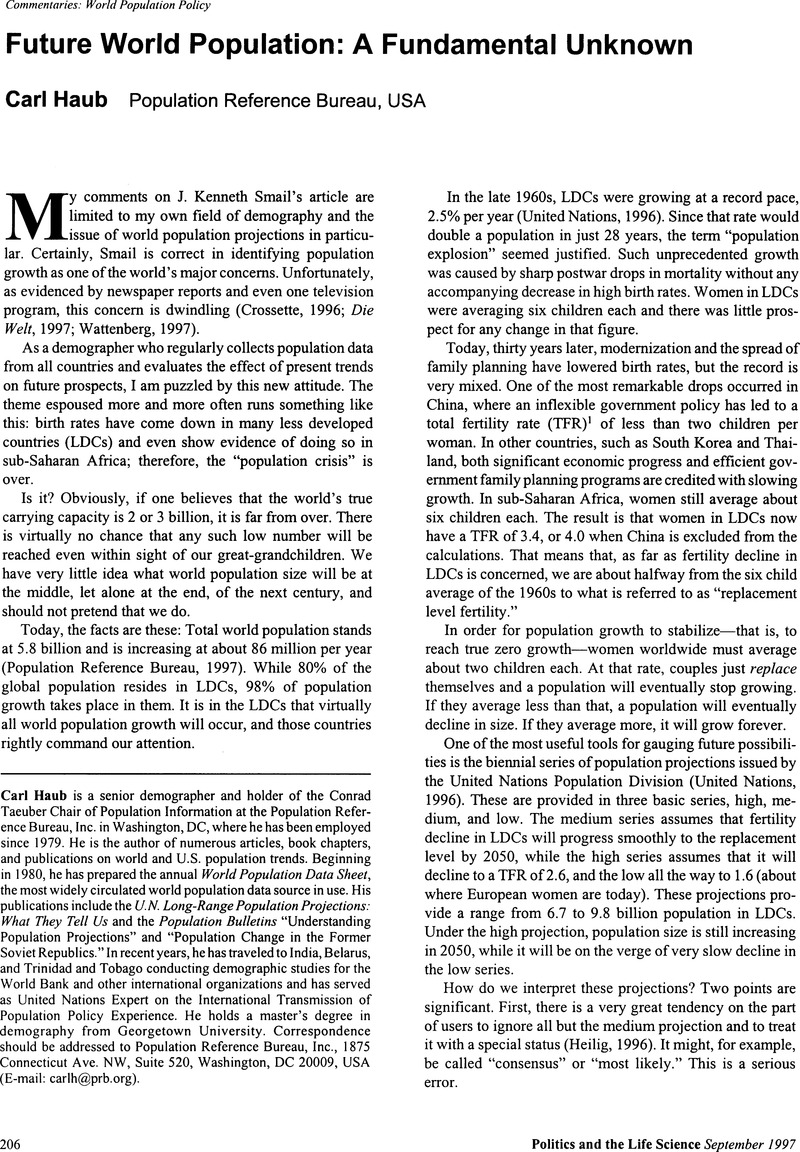No CrossRef data available.
Article contents
Future World Population: A Fundamental Unknown
Published online by Cambridge University Press: 17 May 2016
Abstract
An abstract is not available for this content so a preview has been provided. Please use the Get access link above for information on how to access this content.

- Type
- Roundtable Commentaries
- Information
- Copyright
- Copyright © Association for Politics and the Life Sciences
References
Crossette, B. (1996). “World Is Less Crowded Than Expected, the U.N. Reports.” The New York Times (November 17).Google Scholar
Heilig, G. (1996) “World Population Prospects: Analyzing the 1996 UN Population Projections.” Working paper WP-96-146, International Institute for Applied Systems Analysis, Laxenburg, Austria.Google Scholar
International Institute for Population Sciences (1995). National Family Health Survey, 1992-1993. Mumbai: International Institute for Population Sciences.Google Scholar
Population Reference Bureau (1997). 1997 World Population Data Sheet. Washington, DC: Population Reference Bureau.Google Scholar
United Nations (1992). Long-Range World Population Prospects, Two Centuries of Population Growth, 1950-2150. New York: United Nations.Google Scholar
United Nations (1996). World Population Prospects: the 1996 Revision. New York: United Nations.Google Scholar
Wattenberg, B. (1997). “The Grandchild Gap with Ben Wattenberg.” Think Tank Special, April.Google Scholar


